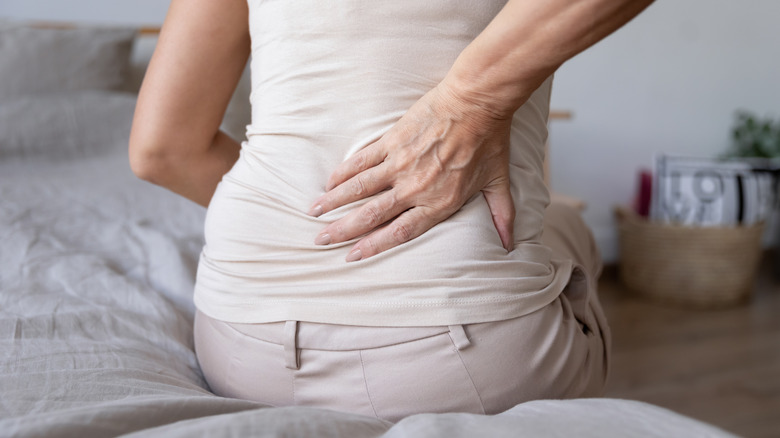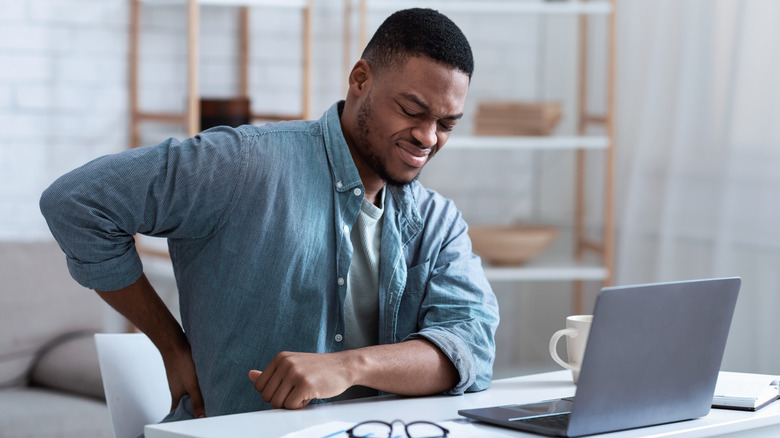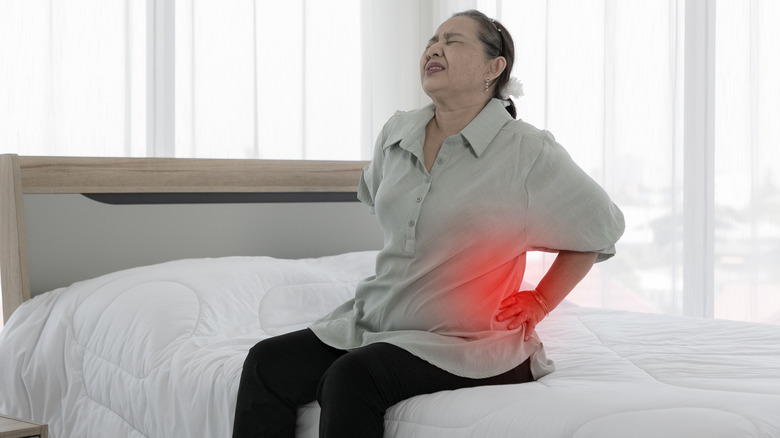Tips For Better Sleep When You Have Lower Back Pain
Lower back pain is a critical health issue affecting most of the world's population. Per Cleveland Clinic, pain in the lower back or pelvic region usually occurs because of muscular strain, often caused by underlying bone disease (such as arthritis) or poor posture. Statistics by the International Association for the Study of Pain (IASP) state that in 2017, about 7.5% of the global population had lower back pain issues — making it one of the leading pain-causing health concerns in the world.
According to Georgetown University Health Policy Institute, about 65 million people in the US currently experience back pain. Of this number, a whopping 16 million have a chronic back pain problem. They further reveal that the country's continuous rising rates of back pain are adding to financial burdens, leading to healthcare costs of over $12 billion per annum. In addition, Georgetown University Health Policy Institute discovered that lower back pain could affect anyone at any age, regardless of age and gender. Statistics show that adults ranging from 18 to 44 years are mostly affected by different kinds of lower back pain.
How to relieve lower backache during the day
If you're a smoker, you might want to quit smoking as it aggravates lower back pain (via University of Rochester Medical Center Rochester). Per experts, smoking is responsible for increasing the risk of osteoporosis, making your bones weaker and damaging the blood vessels that reach the vertebral discs. You may want to take baby steps to gradually quit smoking, and also consider nicotine-replacement therapy for better results.
According to Spine Health, managing your weight is also important, as more mass leads to increased pressure on the back. As a result, your back might become tilted and painful under the stress of your stomach pulling your lower abdomen weight forward. Start exercising to decrease your weight and shed extra pounds to get rid of lower backaches at home. Getting moving can be one of the best lower back pain management tactics (via WebMD). Any kind of physical or aerobic activity such as walking, swimming, cycling, or a workout session might be useful for easing the pain in your pelvic region. But make sure you don't overexert yourself or perform exercises for back pain with excess twists or strain, warns WebMD.
How to ease lower back pain for better sleep
Intense lower back pain can ruin your sleep quality. Dr. Abhinav Singh, a medical review expert for SleepFoundation.org, said in an interview with Livestrong, "Chronic pain can make it difficult to find a comfortable posture and forces frequent position changes." Hence, you might spend most of your night tossing and turning in bed.
If you have lower back pain, you may want to be mindful of your sleep position, since not every pose is feasible or supportive enough for your spine. Healthline recommends sleeping on your sides in a fetal position, or in a prone pose with your face down and tummy resting on a pillow to keep the back straight. The best option, however, is sleeping on your back, as it evenly distributes the weight across all pressure points (via Livestrong). Additionally, choosing the right sleep surface is equally necessary for sleeping soundly with backache. As a general rule of thumb, you'll want to opt for a medium firm or firm mattress. This type of mattress offers remarkable back support, resulting in the least discomfort for your back, suggests WebMD.



